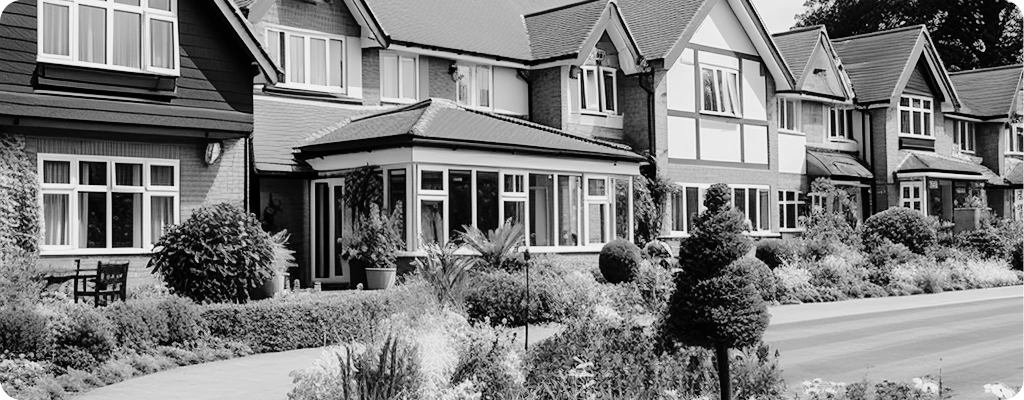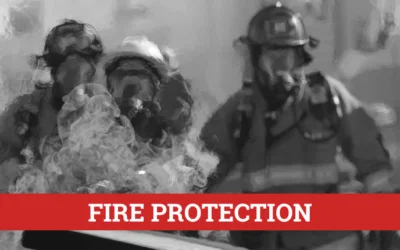
Fires in UK Care Homes
- In UK care homes, there are approximately 388 fires annually.
- The most common cause of care home fires are cooking and kitchen-related incidents.
- Smoking is another significant factor.
- Electrical faults and electrical appliance misuse also contribute.
- While fatalities in care homes due to fire are rare, psychological trauma and distress are more likely to present themselves should the worst-case scenario occur.
- A fire will cause property damage and financial losses outside of primary care for residents and staff.
The Unique Fire Safety Problems Care Homes Face
Unlike many other business types, care homes have a unique set of challenges when dealing with fires, including:
- The limited mobility of residents
- Cognitive impairments
- Increased fire hazards
- Care home layouts
The above points present unique challenges that care home managers and owners must consider. Evacuation is trickier given that many residents will move slower, and those with dementia may not understand the immediate dangers a fire brings. Additional obstacles exist in medical equipment and flammable materials, with the latter being a potentially lethal fire accelerant. While many modern care homes exist, older buildings present increased challenges.
Fire Safety Acts and Regulations
Two primary legislative acts govern care home fire safety compliance:
These acts include elements like:
- Carrying out fire risk assessments
- Reducing the risk of fire
- Ensuring adequate staff training
- Who is responsible for fire safety within the care home
- Immediate fire detection
Beyond the above, there are five non-negotiable critical elements for care home operators when considering fire protection.
Care Home Managers or Owners MUST do the Following Five Things to Ensure Fire Safety Compliance.
- Have a Grade L1 Fire Alarm
- Fire Risk Assessment
- Evacuation Training
- Operational Fire Doors
- Working Fire Extinguishers

1. Grade L1 Fire Alarms
A care home fire alarm must be a Grade L1 standard. This standard is the most comprehensive automated fire alarm system. L1 fire alarms provide the earliest warning of a fire, giving the maximum time available to evacuate residents.
The system includes automatic fire detection (AFD) in all rooms, escape routes, and all voids over 800mm in height. This means installing detectors in every part of a building (essentially), including areas where fires are less likely to start, such as roof spaces, voids, and larger cupboards. The sounders are strategically positioned throughout the building to meet specific sound level requirements, ensuring the alarm is audible in all areas, including where there is a sleeping risk.
Primary aim: To protect life by ensuring that all building occupants have sufficient warning to evacuate safely in the event of a fire.
2. Fire Risk Assessments
Care homes must have an up-to-date Fire Risk Assessment carried out or reviewed within the last 12 months. The Fire Risk Assessment requires an annual review. It should be updated if there is a significant change to the premises or residents.
Primary aim: Identifying potential fire hazards, evaluating the risk of a fire occurring, and determining measures to prevent or reduce the risk to ensure the safety of people and property.
3. Evacuation Training
Fire evacuation training equips individuals and teams with the knowledge and skills to respond effectively during emergencies, such as fires. It involves educating participants on various evacuation scenarios, familiarising them with building evacuation routes and defining their roles during an evacuation. The training emphasises the importance of remaining calm, assisting vulnerable individuals, and understanding emergency preparedness. Practical elements like evacuation drills and simulations are crucial, alongside regular refresher courses and access to emergency procedures. This training is essential for ensuring coordinated, swift, and safe evacuations, ultimately safeguarding lives during emergencies.
Primary aim: Ensure that all building occupants can safely and efficiently exit the premises in the event of a fire. This training helps individuals understand and practice quick and orderly evacuation procedures, minimising the risk of injuries or fatalities during a fire emergency.
4. Operational Fire Doors
High-quality fire doors will slow down the spread of fire. They should be closed at night and are sometimes connected to the fire alarm, meaning they will close automatically on alarm activation. Your fire risk assessment will determine the need for this extra feature.
Primary aim: to compartmentalise a building, thereby containing the spread of fire and smoke. This delay in the spread provides critical extra time for the safe evacuation of occupants and for emergency services to respond. Fire doors are essential to a building’s passive fire protection system, protecting escape routes and reducing the risk to life and property.
5. Working Fire Extinguishers
Fire extinguishers are crucial in care homes for several reasons, primarily due to the vulnerability of the residents, who often include older adults or those with disabilities. Effective (working) fire extinguishers on site are essential to tackle small fires quickly, preventing a wider, more damaging fire spread and reducing the risk to residents and staff.
Primary aim: to provide a first line of defence against small, early-stage fires by extinguishing or controlling their spread until further help arrives or resolving the situation safely. They are designed to be a readily accessible and effective tool for quickly addressing incipient fires, thereby preventing escalation and potential harm to individuals and property.

How We Help
We have years of experience working with care homes and their unique compliance issues regarding fire alarms. We can help with your end-to-end fire compliance and safety needs or with a specific challenge, such as a comprehensive fire risk assessment or a complex L1-grade fire alarm installation.
Get in touch with our friendly team and let us know how you think we can help.
Further Resources
- GOV.UK – Fire safety: guidance for those with legal duties
- London Fire Brigade – 177 care home review findings
- Lottie.org – Fire safety in care homes: Regulation, prevention and what to do




